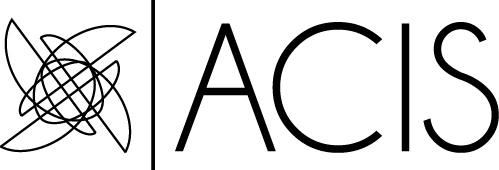
I have attended the American Conference for Irish Studies’s annual meetings several times in the past, but there were never very many options for medievalists, early modernists, or even eighteenth-century folks. For most intents and purposes, ACIS is an organization that, like most Irish Studies programs in North America, begins with the nineteenth century and the Famine (with the occasional passing nod to 1798 and the end of the eighteenth century) and moves forward in time, with an emphasis on the Revival period.
So it was a very welcome change to attend the recent ACIS meeting at the University of Notre Dame in South Bend. Thanks to the efforts of Notre Dame’s Amy Mulligan and Lindy Brady, medievalists who specialize in Ireland were treated to a conference within a conference. Mulligan even put together a separate program for the medievalists, so that we could be certain not to miss anything. In fact, without it, I would not have known that Boston College’s Robin Fleming, a 2013 MacArthur Fellow, was speaking on Thursday evening about Anglo-Saxon cemeteries. All of the medieval panels I saw were excellent, but one of the real highlights was a panel devoted to the Acallam na Senórach. Going beyond the traditional conference format, this panel included a respondent, Ann Dooley from the University of Toronto, who published the first complete English translation (with Harry Roe) of this epic—featuring both Saint Patrick and Caílte, the compatriot of Finn mac Cumhaill—not even twenty years ago.
I was also interested in the sessions about Irish Studies programs because many session participants were concerned with these programs’ current challenges. One of these challenges concerns the question of interdisciplinarity in Irish Studies. On this topic, Dominic Bryan offered rough calculations of the variety of disciplines represented in the papers generally presented at the conference. By looking at paper titles from ACIS conferences from 2008 to the present, he calculated that about 62% of the papers are in literature, cultural studies, film, or theater; 21% are history papers; 5% concern politics; another 5% are sociology papers; and 3% are Irish language papers/issues. Although these percentages don't add up to 100%, they are rather telling. Bryan used these statistics to challenge the audience to think about the interdisciplinary nature of Irish Studies programs. He went on to point out that Irish Studies programs typically don't have economists, anthropologists, or sociologists, and I would add to that list art historians, musicologists, archaeologists, philosophers, and theologists. In other words, if the ACIS conference is representative of the possible avenues of study in Irish Studies programs, these programs are, in some ways, limited; they do not really succeed at being truly interdisciplinary.
The medieval sessions, on the other hand, certainly addressed literature and history, but also archaeology, theology, and manuscript study. They included also a sociological analysis of a recent Big Pharma study of the origins of the Scots. As a whole, medievalists are already well-practiced at being multidisciplinary and would welcome the opportunity to be a larger part of Irish Studies in general and of ACIS specifically. I look forward to attending another ACIS conference and am grateful to Mulligan and Brady for organizing the mini-medieval version in this one.
